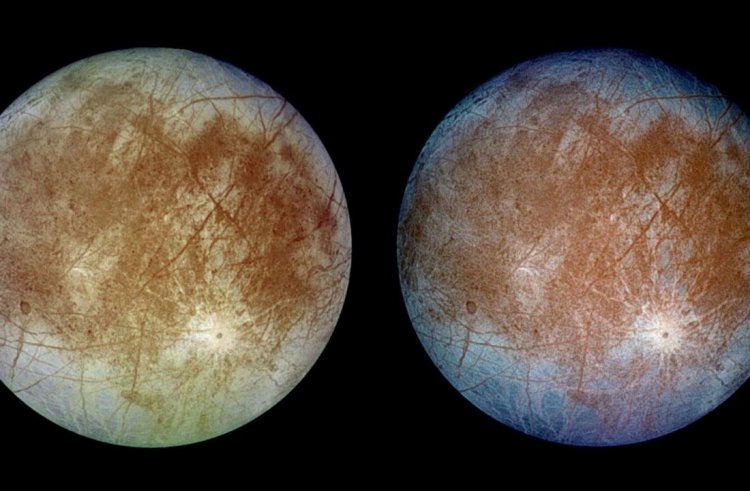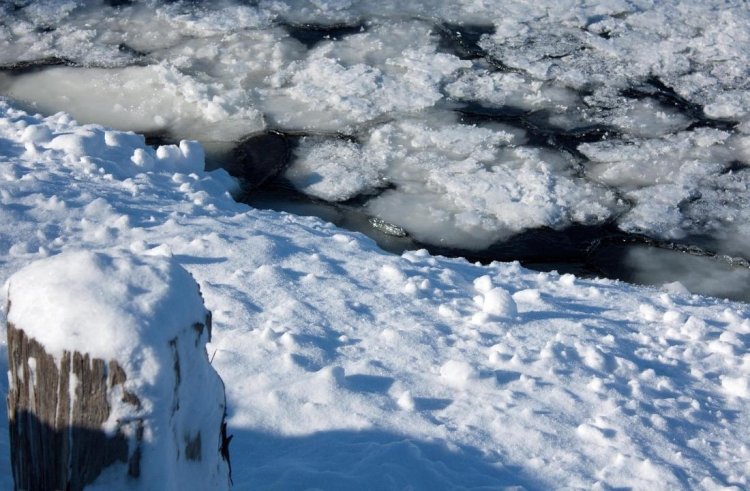New clues about Jupiter's icy moon Europa reveals that it is an underground ocean world
New clues about Jupiter's icy moon Europa reveals that it is an underground ocean world
Updated on August 19, 2022 18:46 PM by Sally Harbor
Discovery has revealed that the planet Jupiter’s icy moon named Europa is an ocean world encased beneath a thick crust of ice, a place where snow floats upward.
The newly discovered Ocean World-Europa

The underwater snow forms in the global ocean and travels up through the water to attach to submerged ravines and inverted ice peaks, according to new research. This same phenomenon takes place below ice shelves on Earth and it also may be how Europa builds its ice shell as well.
Also, read Amusing! Space hotel is scheduled to open in 2025!
The discovery, which was made on Monday and published in the journal Astrobiology, showed that Europa’s ice shell might not be as salty as initially believed. It is essential for engineers building NASA’s Europa Clipper spacecraft, which is getting ready to launch to Europa in October 2024, to comprehend the salt content of the ice crust.
The Europa Clipper will use ice-penetrating radar to look beneath the shell and determine if the moon's ocean is potentially a place for life or not. Any salt within the ice shell could impact how deep the radar can penetrate through it, so predictions about the shell's composition are the key to the research.
The icy moon of Europe and details about its ice
Clues about the ice shell could also help scientists determine more about Europa's ocean, its saline proportions, and its potential to harbor life.
Europa's ice shell is between 10 and 15.5 miles thick, and it likely sits on top of an ocean that's estimated to be 40 to 90 miles deep.
Also read: OneWeb and Eutelsat collab to compete against SpaceX
"When we're exploring Europa, we're interested in the salinity and composition of the ocean, because that's one of the things that will govern its potential habitability or even the type of life that might live there," said lead study author Natalie Wolfenbarger who is a doctoral student researcher at the University of Texas Institute of Geophysics in the UT Jackson School of Geosciences, in a statement.
She is also a graduate student affiliate member of the Europa Clipper science team. Researchers at The University of Texas at Austin are developing the spacecraft's ice-penetrating radar.
Also read: NASA plans to test a catapult that can launch objects into space at 5,000 mph
Previous studies have revealed that the ocean closest to Europa's shell resembles the water beneath Antarctic ice shelves in terms of temperature, pressure, and salinity. The two processes by which water on Earth freezes beneath ice shelves were examined by the researchers: congelation ice and frazil ice.
The difference between Congelation ice and Frazil ice

Congelation ice grows from beneath the ice shelf, while frazil ice drifts up through superchilled seawater in flakes before settling beneath the ice shelf.
Both of these types result in ice that has less salinity than seawater -and according to the researchers, seawater was even less salty when they applied this data to the age and scale of Europa’s ice shell.
Also read: Europa Clipper's High-Gain Antenna Undergoes Precision Testing at NASA Langley
Europa may have a lot of crystalline ice, which would make the ice shell murer than previously thought. Only a very little portion of the salt in saltwater is preserved by fragile ice. The strength, ice tectonics, and heat conduction properties of the ice shell can all be influenced by its purity.
New opportunities and experiments with the help of Europa
"We can use Earth to evaluate Europa's habitability, measure the exchange of impurities between the ice and ocean, and figure out where water is in the ice," said study coauthor Donald Blankenship, a senior research scientist at the University of Texas Institute for Geophysics, in a statement. He is the principal investigator for Europa Clipper's ice-penetrating radar instrument.
Also read: Scientists find new similarities with Jupiter's moon and Earth in search for life
This paper is opening up a whole new batch of possibilities for thinking about ocean worlds and how they work," said Steve Vance, a research scientist at NASA's Jet Propulsion Laboratory based in California, in a statement. "It sets the stage for how we might prepare for Europa Clipper's analysis of the ice."
On the other hand, work is going on for the core of the Europa Clipper spacecraft at the Spacecraft Assembly Facility at NASA’s Jet Propulsion Laboratory
The core, which stands 10 feet tall and 5 feet wide, has taken center stage in the clean room, where NASA teams have assembled spacecraft like Galileo, Cassini, and the Mars rovers.





